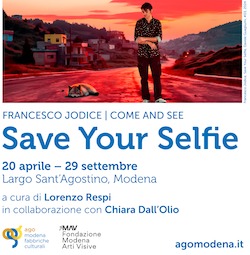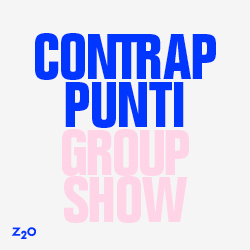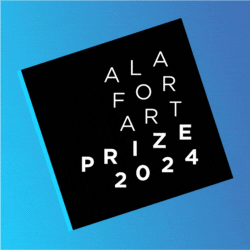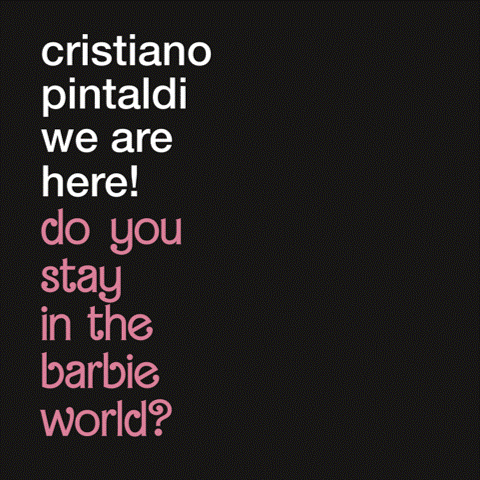[nemus_slider id=”69565″]
—
English text below
Nella giornata di sabato 7 ottobre 2017, si è svolta a Villa Adria (Rovigo) la performance collettiva The Body of Energy. Adria di Stefano Cagol. Progetto itinerante e immersivo, TBOE – acronimo che utilizza l’artista nell’intervista che se segue – si caratterizza per il forte carattere mutevole e ‘assorbente’. Ad ogni nuova tappa si trasforma e si uniforma ai luoghi che lo ospitano. Come rivela lo stesso Cagol – “Per me l’arte è comunicare, lo ripeto sempre, e quando l’arte riesce anche a far partecipare siamo di fronte a una delle espressioni più intense.” – TBOE evoca il rapporto tra energia e ambiente, territorio, cultura e risorse.
Seguono alcune domande a Stefano Cagol —
ATP: Dopo tanti anni che ‘viaggia’ in prestigiosi musei nazionali e internazionali, il tuo lavoro “The Body of Energy” tocca Adria. In questi anni, come si è evoluta l’opera?
Stefano Cagol: “The Body of Energy” è nato tre anni fa come un progetto con un inizio e una fine, anche se con uno spirito itinerante, l’ho già riassunto in un libro (per Revolver Publishing) e in una mostra a Berlino (da CLB Collaboratorium a Moritz Platz), ma mi è stato chiesto di presentarlo nuovamente e nuovamente. TBOE ha un carattere performativo e collaborativo e questo vuol dire che ogni volta si riattiva, e l’esperienza risulta sempre diversa, da museo a museo, da situazione a situazione. Lo definirei un progetto site- e time-specific; anche il tempo è un fattore molto importante nei miei lavori.
Ad Adria per la prima volta ho agito utilizzando una proiezione live su così larga scala, entrando in relazione tutto un edificio liberty (a firma di Giambattista Scarpari). L’azione con la partecipazione del pubblico veniva tradotta da una speciale videocamera e proiettata in tempo reale sull’intera facciata.
Hai detto bene, il progetto viaggia, si muove fisicamente nello spazio e interagisce con diversi contesti: ho iniziato dieci anni fa a realizzare travelling projects e l’aspetto del viaggio fa ormai parte della mia ricerca, le permette di articolarsi in diverse modalità di rapporto con il pubblico e con diversi pubblici. Come ti dicevo, avevo concepito TBOE con un capolinea, invece ora ci sono nuove tappe, perché credo il viaggio sia una perfetta metafora di un modo di fare arte che prende forma “per le strade”, a contatto con quanto ci circonda, respirando l’adesso. Non sono un tipo da studio, il mio studio è il mondo.
ATP: L’opera ha una forte valenza performativa che però deve scendere a compromessi con l’aspetto tecnologico, penso alla telecamera ad infrarossi. Come hai conciliato questi due nature in “The Body of Energy”?
SC: Non avevo mai usato una telecamera a infrarossi prima: ho imparato a utilizzarla insieme al pubblico partecipante, un po’ alla volta, azione dopo azione. E ne ho fatto un uso poetico ed evocativo. Volevo parlare di energia, il calore è una delle sue manifestazioni, si tratta di onde elettromagnetiche invisibili all’occhio umano e la termocamera riesce a rilevarle. Rende visibile l’invisibile.
La tecnologia è molto presente, da sempre, nella mia ricerca. Ho un buon rapporto con essa e le mie opere cambiano di conseguenza anche in base a come evolve la tecnologia, ma il mio approccio è concettuale e quindi uso il mezzo che mi serve quando mi serve per esprimere una mia idea. In questo caso ho scelto di usare una videocamera a infrarossi; per un progetto sul “vuoto” (uno dei video è ora in mostra a Milano) volevo invece confrontarmi con uno strumento molto sofisticato per indagare il sottosuolo, ero nella valle della Ruhr, trafitta dall’uomo in infinite miniere. Alla fine ho usato un piccone.
ATP: Cosa intendi e che significato dai al concetto “performance partecipativa”, soprattutto in un contesto come quello del programma “Scuola: Spazio Aperto alla Cultura” di Adria?
SC: Per me l’arte è comunicare, lo ripeto sempre, e quando l’arte riesce anche a far partecipare siamo di fronte a una delle espressioni più intense.
“Scuola: Spazio Aperto alla Cultura” è un programma nazionale del MiBACT – Direzione generale arte e architettura contemporanee e periferie urbane AAP con la finalità di ampliare l’offerta culturale delle scuole con eventi aperti al pubblico. Avevo già interagito con studenti in precedenza nel contesto di TBOE, in varie situazioni, ma sempre attraverso workshop; questa volta invece l’evento era – appunto – aperto al pubblico, quindi i fili dell’intreccio della partecipazione erano doppi. Al museo Maga di Gallarate ho lavorato per una settimana con due classi (poi quest’esperienza è stata selezionata a livello nazionale come uno dei progetti più interessanti d’interazione tra arte, scuola ed ecologia), all’Università di Salerno hanno partecipato centinaia di studenti e quest’anno mi hanno invitato a Kristiansand in Norvegia.

ATP: Quale tipo di ‘energia’ hai percepito ad Adria? Come hanno reagito gli studenti a questi tipo di interazione con l’arte contemporanea?
SC: Mi piace pensare alle scuole come “fabbriche di energia mentale”, e considero tali anche le istituzioni dell’arte. Vengo infatti sempre piacevolmente stupito dalle reazioni dei ragazzi. Li immaginiamo spesso svogliati e distaccati, mentre io ho ricevuto in risposta sempre un grande entusiasmo, una voglia di partecipare, una grande curiosità. La loro libertà è senza sovrastrutture (che hanno ad esempio i giovani studenti d’arte). Non c’è nei loro occhi nessun atteggiamento sospettoso nei confronti dell’arte, ma grande velocità nel coglierne gli stimoli, la sentono diretta e vicina.
Ad Adria non era la prima volta che lavoravo, è un luogo inaspettato, la città che anticamente ha dato il nome al Mare Adriatico…
ATP: In contemporanea con il progetto ad Adria, hai da poco inaugurato la mostra “The Consequences of Vacua”alla galleria Canepari (Milano). C’è un nesso tra i due progetti?
SC: Vuoto, invisibile, elementi forti e simboli iconici: la mostra a Milano s’intitola “The Consequences of Vacua”. Parla di vuoto anche di ideali, come nel caso del primo video che s’incontra: una bandiera americana sdoppiata che si muove al vento e assume forme associabili a elementi e sensazioni contrastanti. Oltre a una relazione tematica con il progetto TBOE, si può il comune denominatore dell’uso della tecnologia a cui accennavamo, visto che ci sono tre video in mostra, e quello della bandiera appartiene inoltre a una “saga” evoluta con il migliorare degli strumenti tecnologici. E poi c’è un’opera che ho realizzato proprio ad Adria per un’installazione al Museo Nazionale Archeologico di Adria: s’intitola “Elektron (of the mind)”. Elektron è la denominazione che i greci diedero all’ambra, oltre 2500 anni fa, quando attribuirono un valore magico a questa resina fossile (oggi spiegabile con le sue proprietà elettromagnetiche); l’ambra ha dato il nome all’energia e proprio Adria era porto fondamentale sulla “via dell’ambra” dal Baltico alla Grecia. Nel video un monolite di ambra è sospeso ipnoticamente fuori dallo spazio e dal tempo.

The Body of Energy. Adria —Stefano Cagol
Collaborative performance in the frame of “Uno Spazio Aperto alla Cultura” (An open space for culture) by MiBACT, the Italian ministry of culture
Villa Adria, Adria (Rovigo), 7 October, 2017
Some questions to Stefano Cagol —
ATP: After many years traveling to prestigious national and international museums, your work “The Body of Energy” touches on Adria. How has the work evolved?
Stefano Cagol: “The Body of Energy” was born three years ago as a project with a beginning and an end, though with a traveling spirit, I have already summed it up in a book (for Revolver Publishing) and in an exhibition in Berlin (by CLB Collaboratorium at Moritz Platz), but I was asked to present it again and again. TBOE has a performative and collaborative character and this means that every time it is reactivated, and the experience is always different, from museum to museum, from situation to situation. I would call it a site- and time-specific project; time is a very important factor in my work, too.
In Adria for the first time I acted using a live projection on such a large scale, working with a Liberty building (signed by Giambattista Scarpari). The action with public participation was translated by a special camcorder and projected in real time on the entire facade.
You said it right: the project travels, moves physically into space and interacts with different contexts. I started ten years ago to make travelling projects and the idea of journey is part of my research, allowing to articulate modalities of connection with the public and with different types of public. As I was saying, I had conceived TBOE with an end of line, but now there are new stops: I believe the journey is a perfect metaphor for a way of making art that takes shape “in the streets”, in contact with what surrounds us, breathing the present. I’m not a studio men, my studio is the world.
ATP: The work has a strong performative value, but it has to compromise with the technological aspect, I think, of the infrared camera. How did you reconcile these two natures in “The Body of Energy”?
SC: I had never used an infrared camera before: I learned to use it together with the participating audience, a little at a time, action after action. And I used it in a poetic and evocative way. I wanted to talk about energy, heat is one of its manifestations, these are electromagnetic waves invisible to the human eye and the camera can detect them. It makes visible the invisible.
Technology has always been very present in my research. I have a good relationship with it and my works change accordingly also on the basis of how technology evolves, but my approach is conceptual and therefore I use the means I need when I need them. In this case I chose to use an infrared camera; for a project on the “vacuum” (one of the videos is now on view in Milan) I wanted to use a very sophisticated instrument to investigate the subsoil, I was in the Ruhr area, drilled by infinite mines. In the end I used a pickaxe.
ATP: What do you mean by the concept of “participatory performance”, especially in a context like the one in the “School: Open Space for Culture” program in Adria?
SC: For me art is communicating, I repeat it all the time, and when art also succeeds in participating, we face one of the most intense expressions.
“School: Open Space for Culture” is an Italian national program of the MiBACT, the Italian ministry of culture, with the aim of expanding the cultural offer of schools with events open to the public. I had already interacted with students earlier in the frame of TBOE, in various situations, but always through workshops; this time the event was open to the public, so the threads of the engagement were double. At the Maga Museum in Gallarate I worked for a week with two classes (then this experience was selected nationally as one of the most interesting projects of interaction between art, school and ecology), at the University of Salerno hundreds of Students participated and this year I was invited to Kristiansand in Norway.
ATP: What kind of ‘energy’ did you perceive in Adria? How did students react to this kind of interaction with contemporary art?
SC: I like to think of schools as “factories of mental energy,” and I consider on this way also art institutions.
I am always surprised by the reactions of the students. We imagine them often lazy and detached, while I always received a great enthusiasm, a desire to participate, a great curiosity. Their freedom is without prejudices (for example young art students are blocked by preconceptions). There is no suspicious attitude towards art in their eyes, but great speed in capturing the stimuli, they feel art close.
It was not the first time I was working in Adria, it is an unexpected place, the city that has given its name to the Adriatic Sea …
ATP: At the same time, you have recently opened “The Consequences of Vacua” exhibition at the Canepari gallery (Milan). Is there a connection between the two projects?
SC: Empty, invisible, strong elements and iconic symbols: the exhibition in Milan is titled “The Consequences of Vacua”. It also speaks of void as well as ideals lapse, as in the case of the first video you see in the show: an American flag that is doubled and waves in the wind and takes forms that can be associated with conflicting elements and feelings. In addition to a thematic relationship with the TBOE project, a common denominator is also the use of the technology, we mentioned, as there are three video works on view, and the video artwork of the flag belongs to a “stars & stripes saga” evolving with the enhancement of the technology. And then there is a work that I realized right in Adria for an installation at the National Archaeological Museum of Adria: it is titled “Elektron (of the mind)”. Elektron is the denomination that the Greeks gave to the amber, more than 2500 years ago, when they attributed a magical value to this fossil resin (today it can be explained by its electromagnetic properties); amber has given its name to energy and Adria itself was fundamental to the “amber road” from the Baltic regions to Greece. In the video an amber monolith is hypnotically suspended out of space and time.













